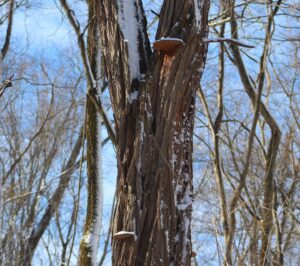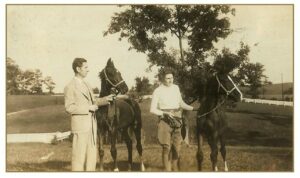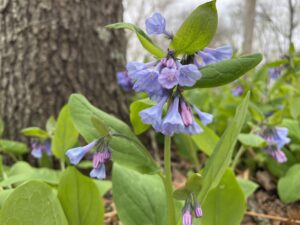by Jacob Crider
The Cracked Cap Polypore (Phellinus robinae) is a species of bracket fungus that grows almost exclusively on Black Locust trees (Robinia psuedoacacia). They are so adept at growing amongst the wounds of the deeply furrowed bark of black locusts, that nearly every large black locust has at least one of these woody and velvety “elf shelves.” They are a parasitic and saprobic species that feed on both living and dead tissues of the trees it infests. They grow a velvety new layer of pores underneath the cap of the fungus every year, and old tissue cracks and hardens and has a very bark-like appearance. Sometimes these mushrooms will grow in large clusters depending on the overall health of the host tree.

Cracked Cap Polypores are assisted in their infestation by the Locust Borer Beetle (Megacyllene robinae), a native pollinating beetle that bores into living locust trees to lay eggs. These beetles can be found pollinating summer wildflowers such as Goldenrod and Aster. Along with being valuable pollinators in Locust habitats, they are a wasp mimic!

At CMNP, these interesting fungi can be seen throughout the preserve in our woodlands, savannas, and pastoral areas where Black Locust Stands still exist. Please do not harvest these mushrooms off of Black Locust trees, as it will kill the polypore, further damage the tree, habitat for animals, and interrupt natural decomposition processes.



